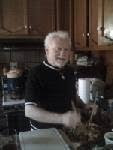A New Tool to Address the Needs of Our Aging Population
When they are no longer able to fully care for themselves, some seniors may seek help in a home care setting, others in assisted living facilities or nursing homes. No matter which option fits their needs, one thing's for sure. As they age, seniors are going to have a lot of doctor's visits.
Denise Pozen of LaGrange, Ill., knows that all too well. When her late father developed heart disease and Parkinson's, she took on the responsibility of handling his care. "Each time he went to the Emergency Room, the doctors and nurses would ask the same questions over and over again. So many times, in fact, that I knew there had to be a more efficient way to answer them," she says.
Among the questions she was asked:
* Who are your father's health care providers and when are his next scheduled appointments?
* What medications is he taking?
* What is your family history of disease?
* What conditions is he currently experiencing?
* What diagnostic tests has he had?
* What diagnoses have been made by other doctors?
Then about four years ago her mother developed health issues that required her to see multiple doctors and often resulted in Emergency Room visits and hospitalizations. "I started going through the exact same experience again, so one day I decided to just write down the answers to all the common questions I was being asked and organize them in a binder, along with photocopies of test results, prescriptions and other medical information I had gathered," says Pozen. "When we arrived at an appointment or the Emergency Room, I'd give the binder to the person asking the questions."
Pozen says the doctors and nurses she encountered were so impressed by what she had done, she decided to start marketing her idea. The product she came up with, The So Tell Me...personal health organizer, is a personal health record that combines such things as emergency contacts, insurance information and health directives with summaries of medical information including doctor visits, medical procedures, medications and lab report, all in one place. It consists of a zippered binder with pre-printed forms and tabs which make recording and finding information easy.
As more businesses and individuals are addressing this change in age demographics, it will be important to stay on top of the tools and services available.
The organizer makes a great entry gift for transient patients at assisted living facilities and a client gift for in-home-care companies and elder-law practioners. Pozen says it's also a good tool for caregivers, like her, who want to make things easier on themselves.
For more information on organizing personal health records or to purchase the So Tell Me...personal health organizer, click here. Businesses and organizations interested in multiple copies are eligible for bulk quantity discounts.
Copyright © 2007, ARAnet, inc.
Jacques' remarks:
While I am in no way connected to MS. Pozen and/or her Company, the above impressed me enough as a viable aid for my fellow-"mature" readers and friends that I decided to share it. For those of you you wish to find out more about "So Tell Me...", their website is: www.sotellme.com and their telephone No. is: (708)- 352-2771.
Wishing you and yours a great weekend and Health!
Your Friend,
Jacques

